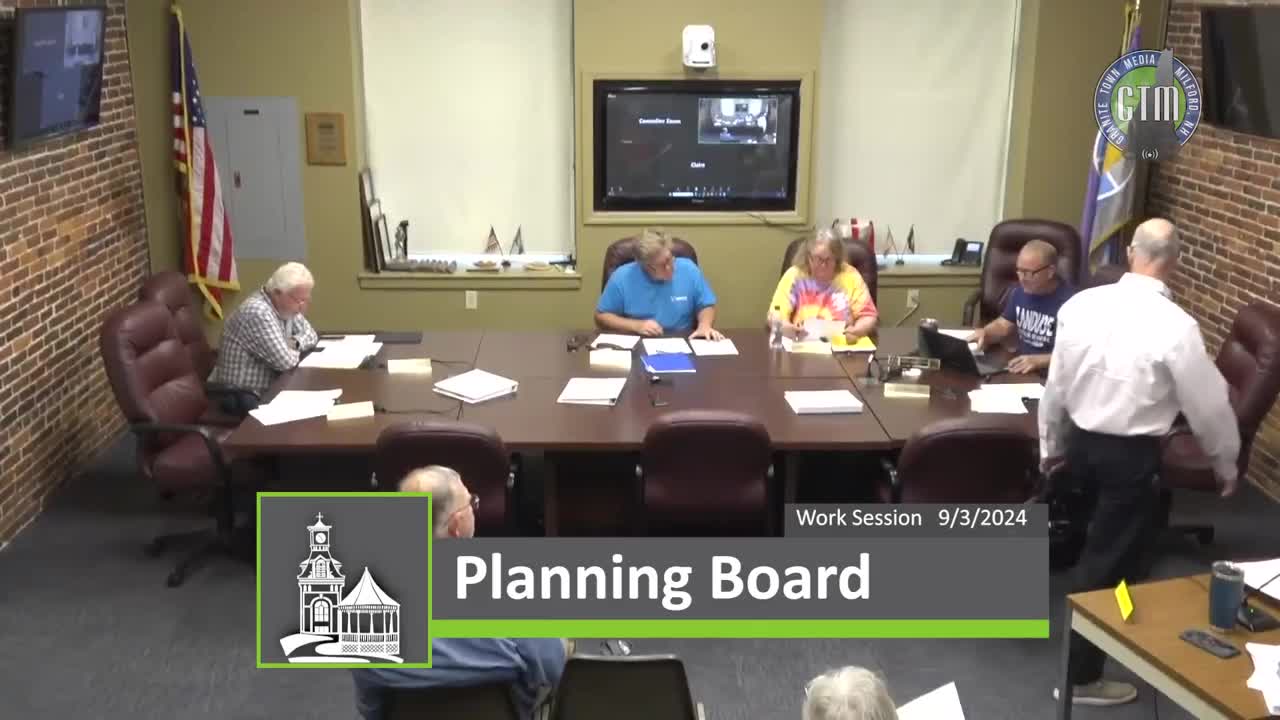Housing Workshop Proposes Bold Changes to Downtown Zoning
September 03, 2024 | Milford Boards & Committees of Selectmen, Milford, Hillsborough County, New Hampshire
This article was created by AI summarizing key points discussed. AI makes mistakes, so for full details and context, please refer to the video of the full meeting. Please report any errors so we can fix them. Report an error »

In a recent government meeting, Mark Fougere presented a proposal aimed at addressing the housing crisis in the downtown area by creating a multifamily zoning overlay district. Fougere highlighted that 95% of the lots in the downtown do not conform to current zoning regulations, which require a minimum of 15,000 square feet for single-family lots and 20,000 square feet for multifamily lots. He noted that most of these nonconforming lots were built before zoning was adopted in 1968, leading to a mismatch between existing land use and zoning requirements.
Fougere's proposal seeks to allow for greater density in the downtown area, suggesting a new overlay district that would enable conversions of existing homes into multifamily units with a minimum of 500 square feet per unit. This change would streamline the approval process, allowing the planning board to oversee conditional use permits instead of requiring variances from the zoning board of appeals.
The discussion also touched on the implications of increased housing density, including potential impacts on local services and tax rates. Concerns were raised about the financial burden that additional housing could place on taxpayers, particularly in relation to school enrollment and associated costs. However, proponents argued that the need for housing is pressing, and that the proposed changes could revitalize the downtown area while providing necessary accommodations for residents.
Fougere emphasized the importance of aligning zoning with the existing character of the neighborhood, suggesting that the new regulations would reflect the actual land use and promote reinvestment in the area. The proposal is still in its early stages, with further discussions and refinements expected as the planning board considers the potential benefits and challenges of the new overlay district.
Fougere's proposal seeks to allow for greater density in the downtown area, suggesting a new overlay district that would enable conversions of existing homes into multifamily units with a minimum of 500 square feet per unit. This change would streamline the approval process, allowing the planning board to oversee conditional use permits instead of requiring variances from the zoning board of appeals.
The discussion also touched on the implications of increased housing density, including potential impacts on local services and tax rates. Concerns were raised about the financial burden that additional housing could place on taxpayers, particularly in relation to school enrollment and associated costs. However, proponents argued that the need for housing is pressing, and that the proposed changes could revitalize the downtown area while providing necessary accommodations for residents.
Fougere emphasized the importance of aligning zoning with the existing character of the neighborhood, suggesting that the new regulations would reflect the actual land use and promote reinvestment in the area. The proposal is still in its early stages, with further discussions and refinements expected as the planning board considers the potential benefits and challenges of the new overlay district.
View full meeting
This article is based on a recent meeting—watch the full video and explore the complete transcript for deeper insights into the discussion.
View full meeting
